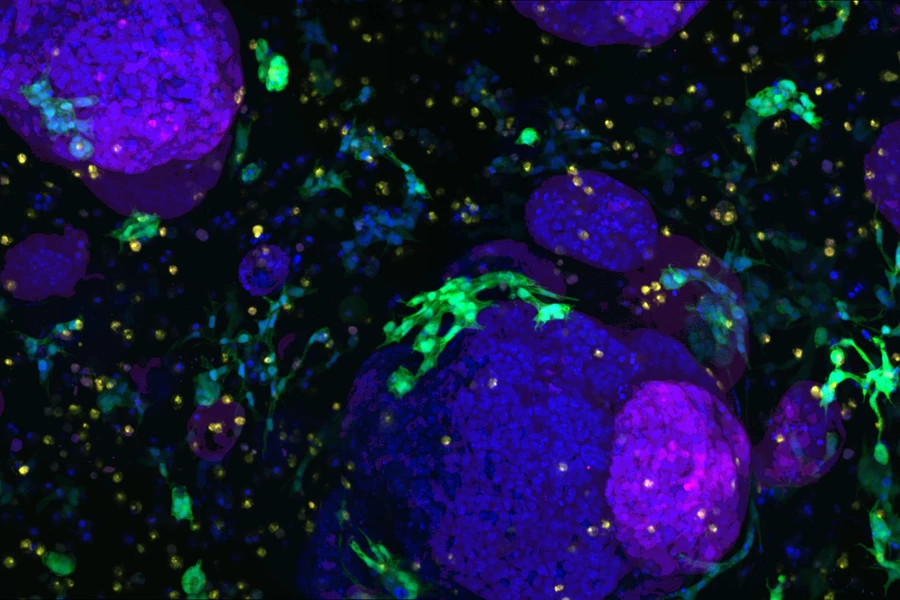By subjecting specific cells to specific sets of chemicals in the lab, scientists are able to grow tissues and organs that mimic those found in the human body. This provides them with a powerful tool to study disease, and drugs that may be able to treat them, and we've seen these "organoids" take the shape of miniature lab-grown hearts, lungs, brains and blood vessels. Lab-grown replicas of the pancreas developed at MIT mark another step forward in this area, with the scientists hopeful the technology behind it can not just help develop new drugs for cancers afflicting the organ, but other particularly deadly types as well.
The MIT engineers behind the new study teamed up with scientists at the Cancer Research UK Manchester Institute for the effort, seeking to improve on typical methods for growing organoids in the lab. Many of these rely on specialized gels to cultivate the lab-grown tissues, but these commonly involve complex mixes of proteins and growth factors that can lead to mixed results, and don't enable the growth of multiple cell types.
Around a decade ago, MIT engineers started working on a synthetic gel that could be produced in a more consistent fashion, and used as a medium to cultivate epithelial cells that band together to line most organs in the body, along with other types of important support cells. A biocompatible polymer called polyethylene glycol (PEG) served as the base for the team's new gel, and from there they looked to incorporate other snippets of biological material that could help get the job done.
This led them to the extracellular matrix (ECM), a meshwork of proteins and other materials that are secreted by cells around the body but surround them to act as a supporting structure. Studying the biochemical makeup of the ECM enabled the scientists to pick out the features they needed for their PEG gel to support the growth of epithelial and support cells. This included molecules called peptide ligands that adhere cells to the gel in order to form organoids, and small peptides derived from fibronectin and collagen.
The team had previously used this PEG gel to grow different forms of epithelial tissues, such as intestinal tissues, and shown that it can be used to grow thriving support cells called stromal cells and immune cells. The new study focuses on adapting it to grow pancreatic tissue. This effort was motivated by difficulties studying pancreatic tumor cells in the lab, which lose their cancerous traits when removed from the body.
Using healthy or cancerous pancreatic cancer cells from mice as the starting point, the team was able to use the gel to grow tiny pancreas organoids and tumors, a feat that was repeated using pancreatic cancer cells from human patients. These were compared to tissues studied in living mice, and were found to possess many of the same cells and proteins as the real thing.

The hope is that these organoids can provide researchers with a new tool to study the critical interactions between pancreatic tumors and their environment. But because the gel technology is entirely synthetic, relatively simple and able to be produced with a new degree of consistency, the hope is that it can be applied to other cancer types or health conditions by incorporating different growth factors.
“The issue of reproducibility is a major one,” says study author Linda Griffith. “The research community has been looking for ways to do more methodical cultures of these kinds of organoids, and especially to control the microenvironment.”
Other possibilities include using the gel as a platform to grow tissues and organoids to study lung, colorectal and other types of cancer, and how potential drugs affect these tumors and their environment. Endometriosis, in which tissue lining the uterus grows outside the organ and causes pain and infertility, is another possibility.
"The cancer field has long relied upon other approaches (mouse models or isolated cell studies), and the contribution of the organoid approach, and notably the gel structure in which these mini groups of cells grow, will be pivotal to research advancement," says Hilary Critchley, a professor of reproductive medicine at the University of Edinburgh, who was not involved in the study.
The research was published in the journal Nature Materials.
Source: MIT




